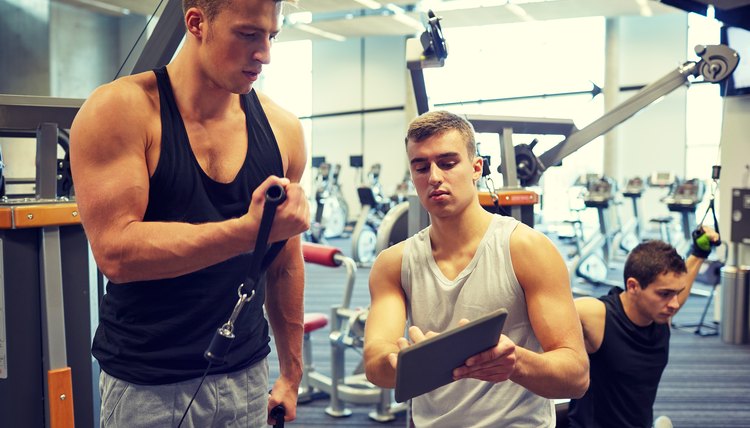What does fact checked mean?
At SportsRec, we strive to deliver objective content that is accurate and up-to-date. Our team periodically reviews articles in order to ensure content quality. The sources cited below consist of evidence from peer-reviewed journals, prominent medical organizations, academic associations, and government data.
- ExRx.net: Workout Logs
- ExRx.net: Designing a Full Body Workout
- American Council on Exercise: Circuit Training
The information contained on this site is for informational purposes only, and should not be used as a substitute for the advice of a professional health care provider. Please check with the appropriate physician regarding health questions and concerns. Although we strive to deliver accurate and up-to-date information, no guarantee to that effect is made.
Weider Crossbow Workout Routines

Although the Weider Crossbow doesn't have a weight stack, the setup is reminiscent of cable machines at the gym. The Crossbow uses rods for resistance, and they're attached to a system of pulleys that allow you to work individual muscle groups with traditional gym-type exercises. This equipment is capable of working all your muscle groups with any number of different routines that will help you get in shape and reach your fitness goals.
Muscle-By-Muscle
You can focus on two or three muscle groups each day to work your entire body over the course of two or three days with the Weider Crossbow. One example is the three-day split: work your back and biceps on day one doing exercises such as rows, pull downs and curls; work your chest, shoulders and triceps on day two with presses, flys, shrugs and triceps pushdowns; and finish out the split with legs and abs on day three performing calf raises, leg extensions, hip adductor and abductors, crunches and ab twists.
Full-Body Routines
If you find it difficult to schedule in a lot of time for your workout, use your Weider Crossbow to do full-body routines. Full-body routines tend to take more time than split routines, but you won't have to dedicate as many days per week to full-body routines, and all your muscle groups will get exercised consistently. Design your full-body routine by picking out one exercise per muscle group, then perform three sets of 12 to 15 reps of each exercise. An example of a full-body routine on a Weider Crossbow would be standing calf raises, seated ab crunches, chest presses, triceps pushdowns, rows, and squats. Allow one day in between full-body workouts and, as with any resistance routine, remember to warm up before you start and stretch to cool down when finished.
Crossbow Circuit Training
If you are partial to circuit training, you can adapt the circuit workout from the gym to work on a Weider Crossbow. Because a circuit involves going from one exercise to the next with no time out to rest, you'll find it fairly easy on a Crossbow because all the exercises are performed on the same piece of equipment. For instance, perform one set each of flys, leg presses, lat pull-downs, lying crunches, military presses, seated leg curls, triceps kickbacks, hammer curls, calf raises and low rows. Do 15 reps of each exercise, going entirely through the circuit before taking a 60- to 90-second rest. Then work through the circuit at least twice more.
HIIT it on the Crossbow
There's a reason High Intensity Interval Training, HIIT, is popular. You can whiz through your workout routine in as little as 20 minutes; you get your resistance and your cardio in one shot and the quick bursts of activity coupled with short rest intervals are ideal for fat burning. Work your Weider Crossbow HIIT like a circuit, but choose four or five exercises and do reps for time instead of counting them. For example, do glute kicks as quickly as you can while keeping proper form for 45 seconds then slow the pace down and continue to kick at a slower speed for another 15 seconds. Then move on to chest presses, biceps curls and upright rows, doing each for one minute with the same 45-second/15-second split. Complete the circuit until you've done five sets of each exercise.
References
Writer Bio
Elle Di Jensen has been a writer and editor since 1990. She began working in the fitness industry in 1987, and her experience includes editing and publishing a workout manual. She has an extended family of pets, including special needs animals. Jensen attended Idaho and Boise State Universities. Her work has appeared in various print and online publications.
